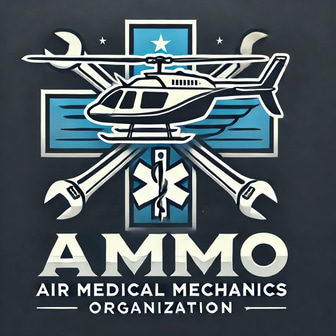Disclaimer: The information provided is for general informational and educational purposes only. Nothing contained herein shall be construed as guidance for, or a basis of, compliance of any regulatory or certification standards. This information must not be used as the sole basis for the certification, inspection, repair, modification, or return to service of any aircraft, product, or component. Users are responsible for consulting appropriate, approved technical data, regulatory authorities, before performing any maintenance, modification, or return-to-service actions.
Aircraft Engine Certification and Compliance
The FAA provides extensive guidance on the certification and regulatory compliance of aircraft engines. These advisory circulars (ACs) cover various aspects, including engine design, durability, safety standards, and performance requirements. Below is a categorized list of FAA ACs related to aircraft engines, along with brief descriptions.
Engine Performance and Durability Testing
These circulars establish testing procedures and compliance standards for ensuring the reliability and durability of aircraft engines.
AC 33.70-3 - Link
This advisory circular provides guidance on the endurance testing of aircraft engines to ensure compliance with FAA certification requirements. It outlines procedures for evaluating engine performance under prolonged operational conditions.
AC 33.70-2 - Link
This document details specific test protocols for assessing engine resistance to wear, thermal expansion, and stress during prolonged use. It serves as a guide for manufacturers to prove engine durability before certification.
AC 33.70-1 - Link
This circular outlines the endurance and operational stress testing required for engine type certification. It provides insights into regulatory expectations for manufacturers regarding fuel efficiency and operational longevity.
AC 33.87-2 - Link
This AC covers engine performance validation procedures, including cyclic endurance testing, wear and tear assessments, and environmental exposure testing. It ensures that engines meet airworthiness standards.
AC 33.75-1A - Link
This advisory circular provides certification guidelines for turbine engine rotor integrity and stress testing. It establishes safety benchmarks for rotor failure prevention and containment.
Engine Component Certification and Material Standards
These references define the regulatory framework for the certification of engine parts, materials, and safety requirements.
AC 20-144A - Link
This circular provides guidance on certification requirements for aircraft engine fire protection. It details materials and design practices to prevent fire hazards in engine components.
AC 20-147A - Link
This AC outlines approval processes for engine components manufactured under FAA Production Approval Holders (PAHs). It provides guidance on material conformity and manufacturing processes.
AC 20-135 - Link
This document provides safety standards for fuel and ignition systems in turbine engines. It defines material selection and system reliability requirements for safe engine operation.
AC 20-88A - Link
This advisory circular discusses standards for turbine engine failure analysis and mitigation measures. It ensures that engine designs incorporate redundancy and containment mechanisms.
Engine Installation, Maintenance, and Operational Safety
These circulars outline requirements for proper installation, maintenance, and safety protocols for aircraft engines.
AC 20-100 - Link
This document covers the installation and maintenance requirements for reciprocating and turbine engines. It provides guidelines to ensure safe integration with aircraft systems.
AC 20-124 - Link
This circular discusses procedures for evaluating engine control system malfunctions and failures. It ensures compliance with FAA safety regulations.
AC 21-19B - Link
This AC explains the type certification process for engine modifications and overhauls. It provides steps for ensuring continued airworthiness following major repairs or component replacements.
Special Engine Testing and Identification Requirements
These references include specific regulations for additional testing and compliance checks related to engines.
AC 33.76-1B - Link
This document describes the bird ingestion and foreign object debris (FOD) testing requirements for turbine engines. It ensures that engines meet safety performance thresholds in the event of FOD impact.
AC 45-3A - Link
This advisory circular specifies engine marking and identification requirements for traceability and compliance. It ensures that all certified engines have proper identification to meet FAA tracking standards.
© 2024. All rights reserved.
Disclaimer: The information provided by the Air Medical Mechanics Organization (AMMO) is for general informational and educational purposes only. It has not been reviewed, approved, or accepted by the Federal Aviation Administration (FAA), any Organization Designation Authorization (ODA) holder, Type Certificate (TC) holder, Supplemental Type Certificate (STC) holder, or any aircraft or component manufacturer.
Nothing contained herein shall be construed as guidance for, or a basis of, compliance with FAA regulations, manufacturer-approved data, type certificate or supplemental type certificate requirements, or any other regulatory or certification standards. This information must not be used as the sole basis for the certification, inspection, repair, modification, or return to service of any aircraft, product, or component.
Users are responsible for consulting appropriate, approved technical data, regulatory authorities, and manufacturer guidelines before performing any maintenance, modification, or return-to-service actions. AMMO assumes no liability for the use or misuse of any information provided
